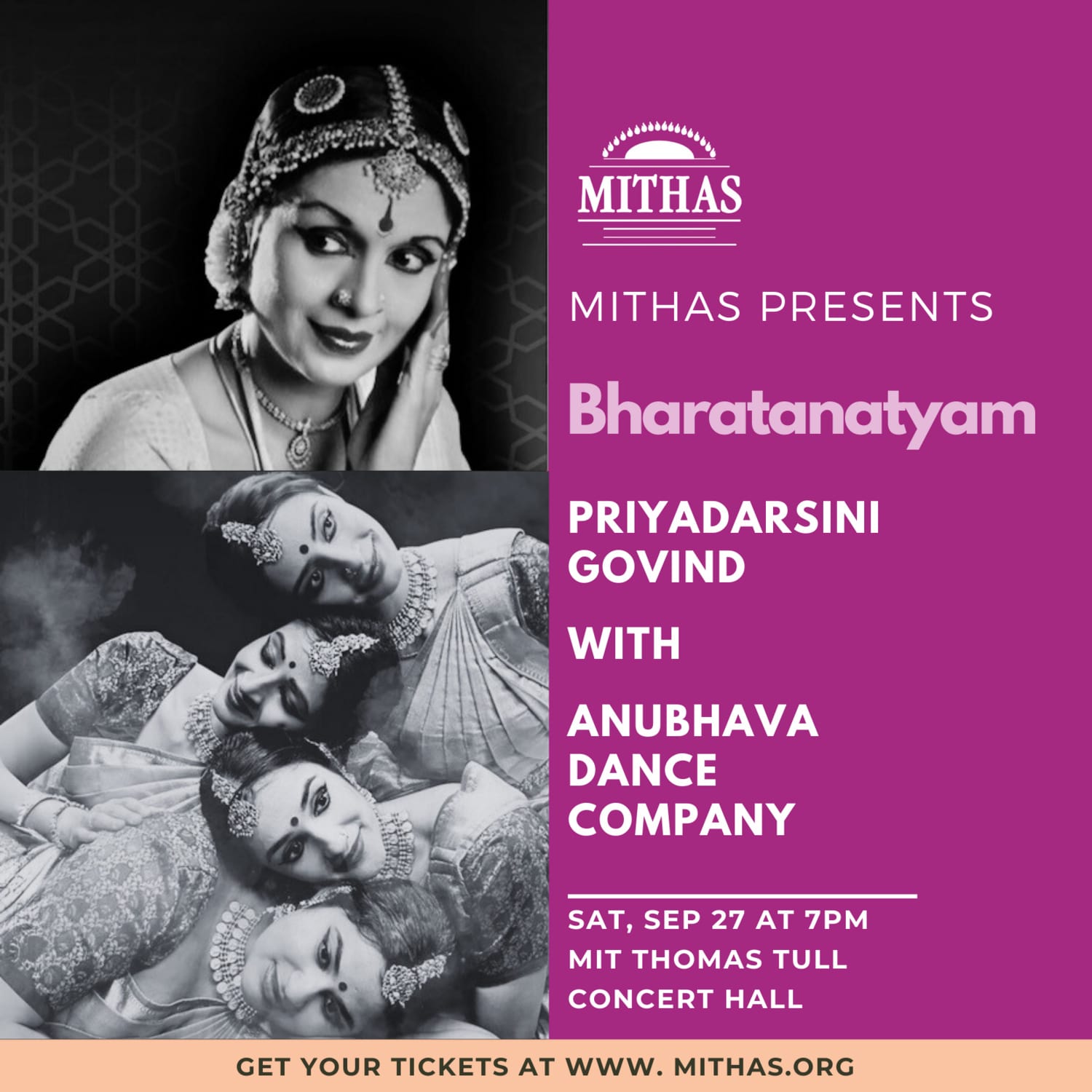Indian classical dance is reaching into new terrains, with concept-driven work seen through multiple lenses and daring to ask how the mind–body–Self thinks, feels, and remembers.. On September 27, 2025, at MIT’s Thomas Tull Concert Hall, the MITHAS Dance Series presented two such works: Explorations by Anubhava Dance Company and Yavanika by Priyadarshini Govind.
Here are some excerpts from the evening:
The dance production Explorations, by Anubhava Dance Company, examined emotion through a scientific lens — mapping states such as humor, fear, love, sadness, and peace to reveal their psychological patterns and embodied effects. Conceived, choreographed, and directed by Dr. Shriya Srinivasan and Dr. Joshua George, the work was performed by Swathi Jaisankar, Shriya Srinivas, Sita Vakkalanka, Shriya Srinivasan, and Joshua George. Together, the ensemble displayed excellent coordination and thoughtful choreography, with dynamic use of space and lighting.
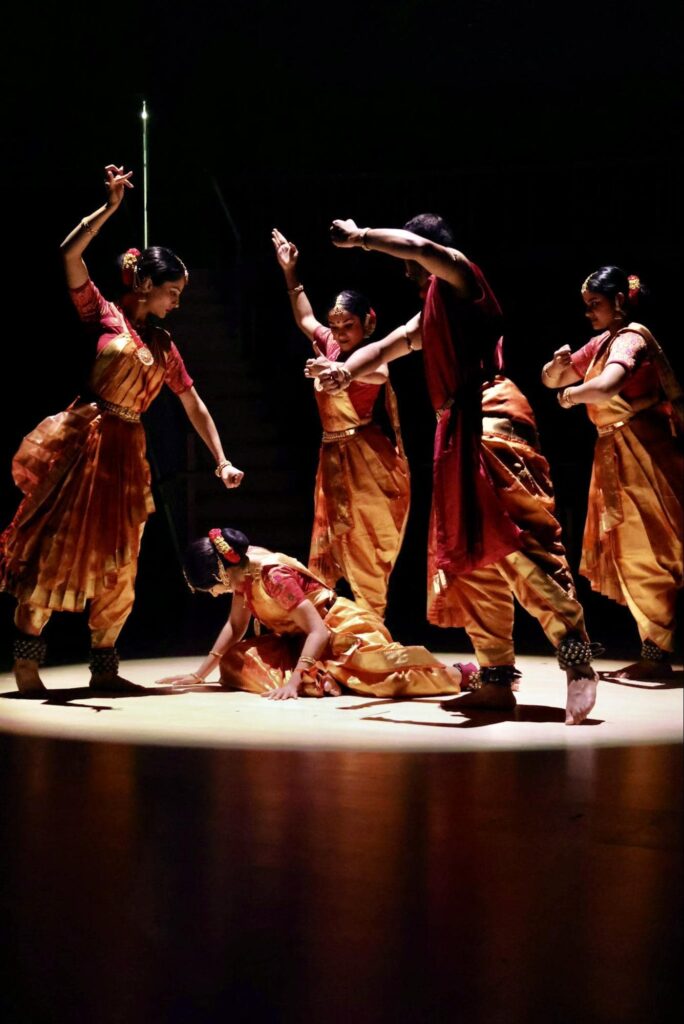
The evening opened with humor. Dancers playfully restructured the Alārippu, turning it into meta-choreography. The rhythmic musical structure lent itself beautifully to this playful reworking, allowing humor to surface while holding an undercurrent of quiet sadness: a dancer left alone, singled out, pulled back, or momentarily hidden. The section evoked the sly wit of Jerome Robbins’ 1956 ballet spoof of classical dance while quietly asking: does humor connect or can it also other us?
In fear evocative moments appeared through spider gestures (ūrṇanābha mudra) crawling across a dancer’s body; imagined monsters surfacing in sleep; and an allegory of a tempestuous storm as societal pressure. The scene of the storm was strikingly rendered with ocean-colored cloth, raised and waved like rippling water in turbulent wind– a tempest Jesus confronts, embodying faith in self and trust in a higher power. In Siddhārtha Gautama’s story, dancers depicted the bodhi tree in a striking visual: lined up, arms in dola hasta, angled upward and downward alternately, creating the impression of branches as the dancer portraying Buddha sat in meditative stillness.
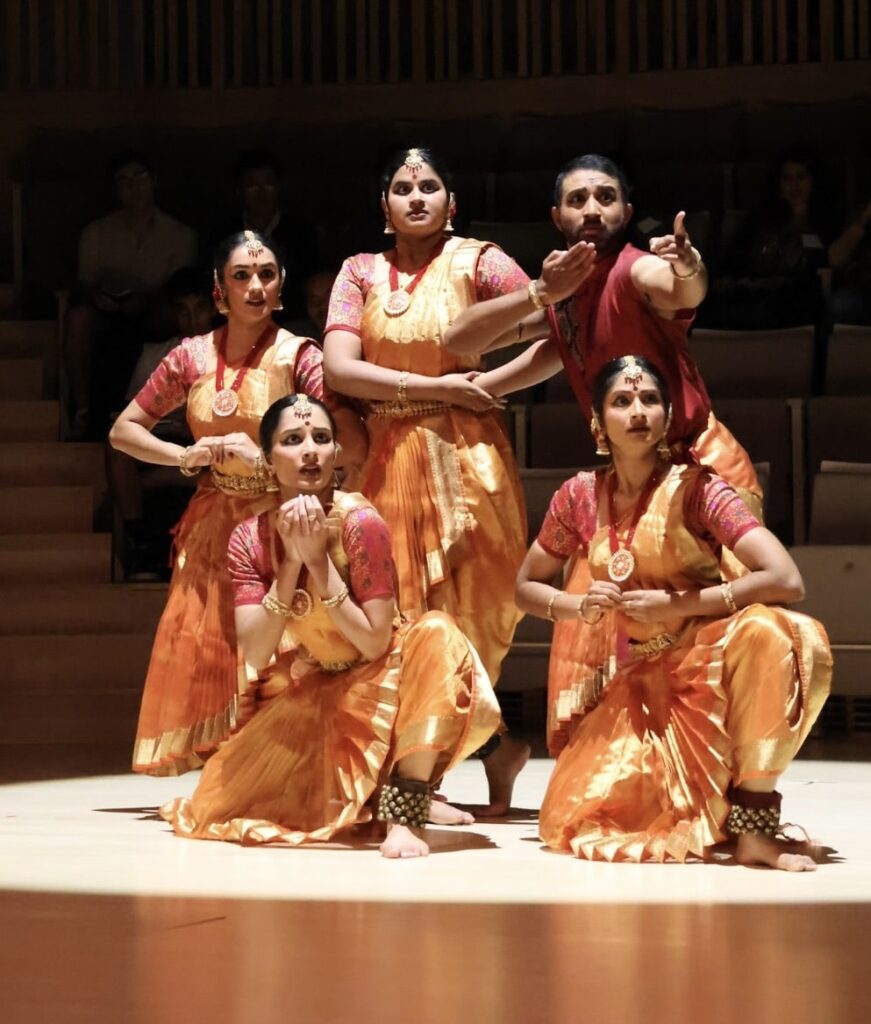
Love and sadness were approached through the lens of mental health. Two dancers sat across from each other on stools, mirroring gestures in quiet, personal dialogue before their movements slowly diverged. One embodied how we present ourselves to the world; the other, what we conceal. Together, they created a powerful display of emotional dissonance; the gap between outward poise and inner turbulence.
The production concluded with peace, seeking resolution through the dance of Śiva. While the choreography’s movement toward stillness was dynamic, the chosen song, musically and lyrically, did not fully resonate with the theme. The use of a red cloth at the beginning also felt unnecessary and visually confusing.
Explorations offered an ambitious, conceptually rich mapping of emotion through dance. Its strongest moments lay in inventive visual metaphors and an ensemble physically and emotionally invested without fault. With sharper alignment between music and thematic intention, especially in the culminating idea of peace, the production’s scope could resonate even more fully. Yet its questions endure: how the body thinks and feels, and how dance renders the unseen architecture of the mind. In this pursuit, Anubhava Dance Company is expanding the scope of narrative in the Indian classical dance sphere, forging new pathways where analysis, precision, and intention meet artistry — much like the science that informs their work.
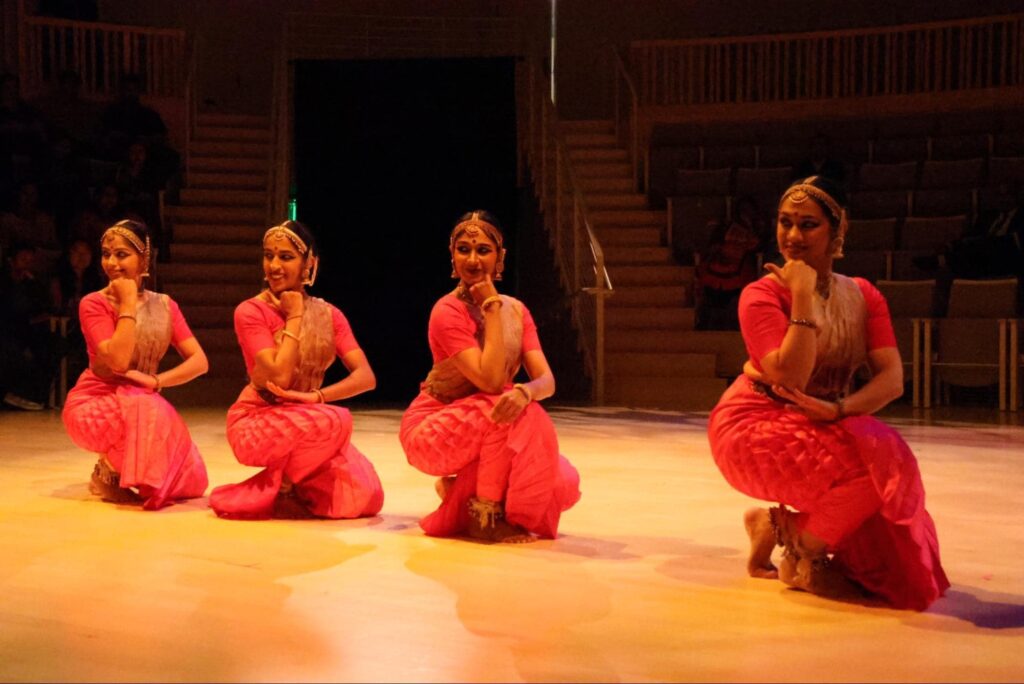
Priyadarshini Govind’s Yavanika: The screen of illusion, explores the embodied self’s relationship to the Supreme Consciousness through shifting dualities of life and death, presence and absence, inner and outer. Here, the veil is the body itself, binding the soul to the illusion of identity and entanglement in the ordinary.
Themes of duality emerged through segments offering poetic lenses on the veil. Songs and texts by Tagore, Akka Mahadevi, Pambatti Siddhar, Kshetrayya, Muthuswami Dikshitar, and Kabir shaped episodes of coexistence and tension: the self’s ascension, entanglement in saṃsāra, the illusions (Māyā) between life and death, the five elements of body and world, and finally mokṣa, where the Being soars towards transcendence through music and dance. Govind’s choreography intricately wove philosophical inquiry into the agency of the dancing body.
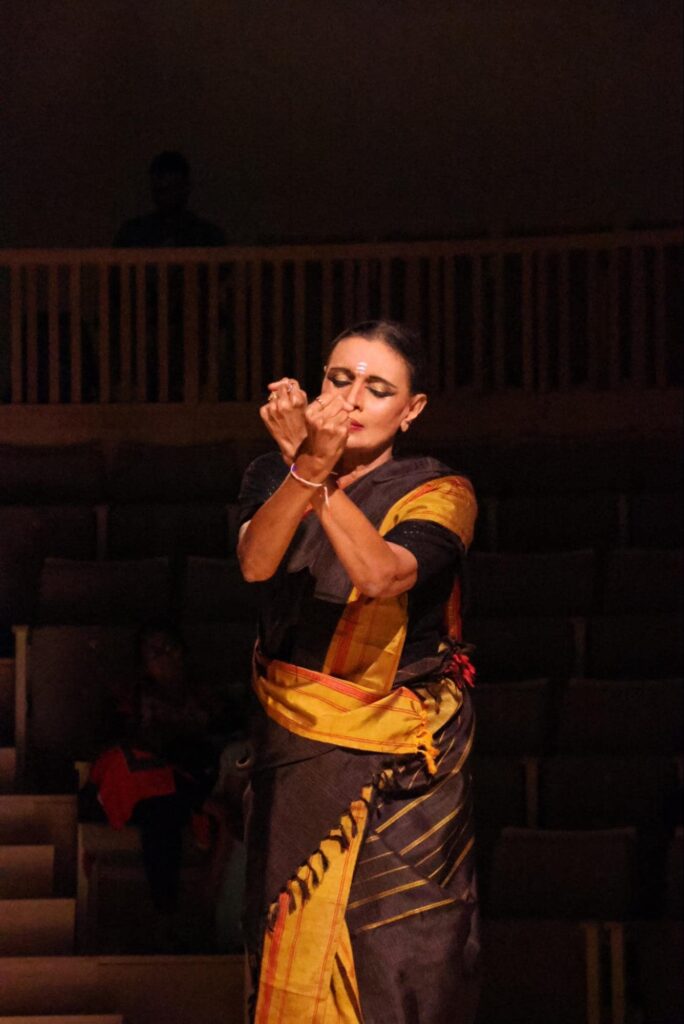
Production values were high: Priyadarshini and her eight disciples – Apoorva jayaraman,Shweta Prachande,Rukshikaa Elankumaran, Medha Hari, Srinidhi Raghavan, Srushti Rajagopalan, Mithra Arun and Kirtana Krishnan, delivered disciplined, arresting ensemble work. Lighting by Keerthi Kumar, often acted as a subtle storyteller, shaping space and mood. Costuming in traditional red and gold Bharatanāṭyam attire, gave coherence and dignity. Yet for the Sufi-inspired section on Kabir, the sudden switch to white maxi-like dresses felt visually detached from the established aesthetic; a more symbolic prop might have conveyed the shift in visual and narrative element, while preserving continuity.
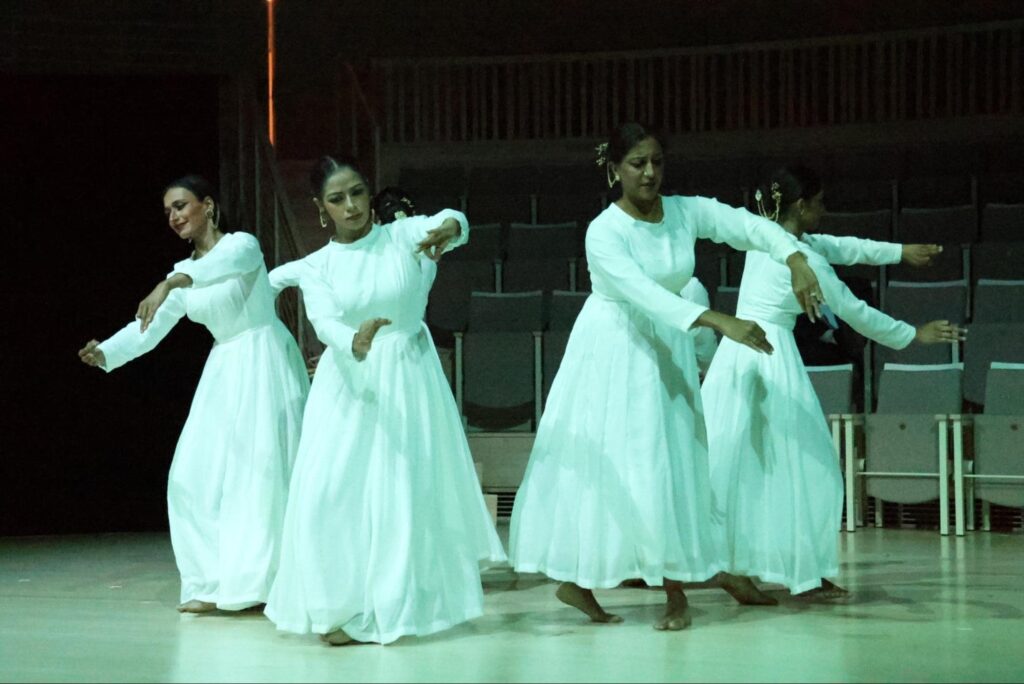
Highlights of the evening lay in two stirring moments. In the first, the dancers moved with quiet, graceful precision, to Kabir’s famous Jhini Jhini, their measured phrasing evoking the vertical threads of warp and the horizontal threads of weft — a delicate weaving that metaphorically suggested the body’s own fragile construction. Priyadarshini’s choreography, set to music by Rajkumar Bharathi, here became a symphony of movement shaped by lyrical musicality. The second came when Priyadarshini lifted the veil and spoke as the Self: “When the time comes to return me to Him, how will you return me, with your head held high, or marked by the unmissable stains of human folly?”The unexpected direct address, the Self speaking to the body, was haunting, carrying a quiet poignancy in its truth.
Yavanika is most compelling when it trusts the body to hold its layered philosophy. With tighter editing this production could deepen from thoughtful to truly enduring. Any exploration of the Self and the Supreme is daunting, and Priyadarshini Govind approached it with both creative intelligence and quiet sophistication, balancing her inner vision with care for the audience’s journey.
Seen together, Explorations and Yavanika offered richly textured experiences, even if the back-to-back pairing felt dense and risked audience fatigue. What endured, however, was their shared ambition to expand the expressive and conceptual range of Indian classical dance. Both works show how tradition can hold space for inquiry, into science, philosophy, and self-reflection, while still moving and stirring us. It is heartening to witness artists invest this level of thought, craft, and courage into evolving the form.

